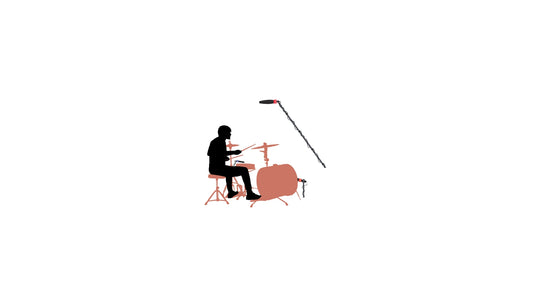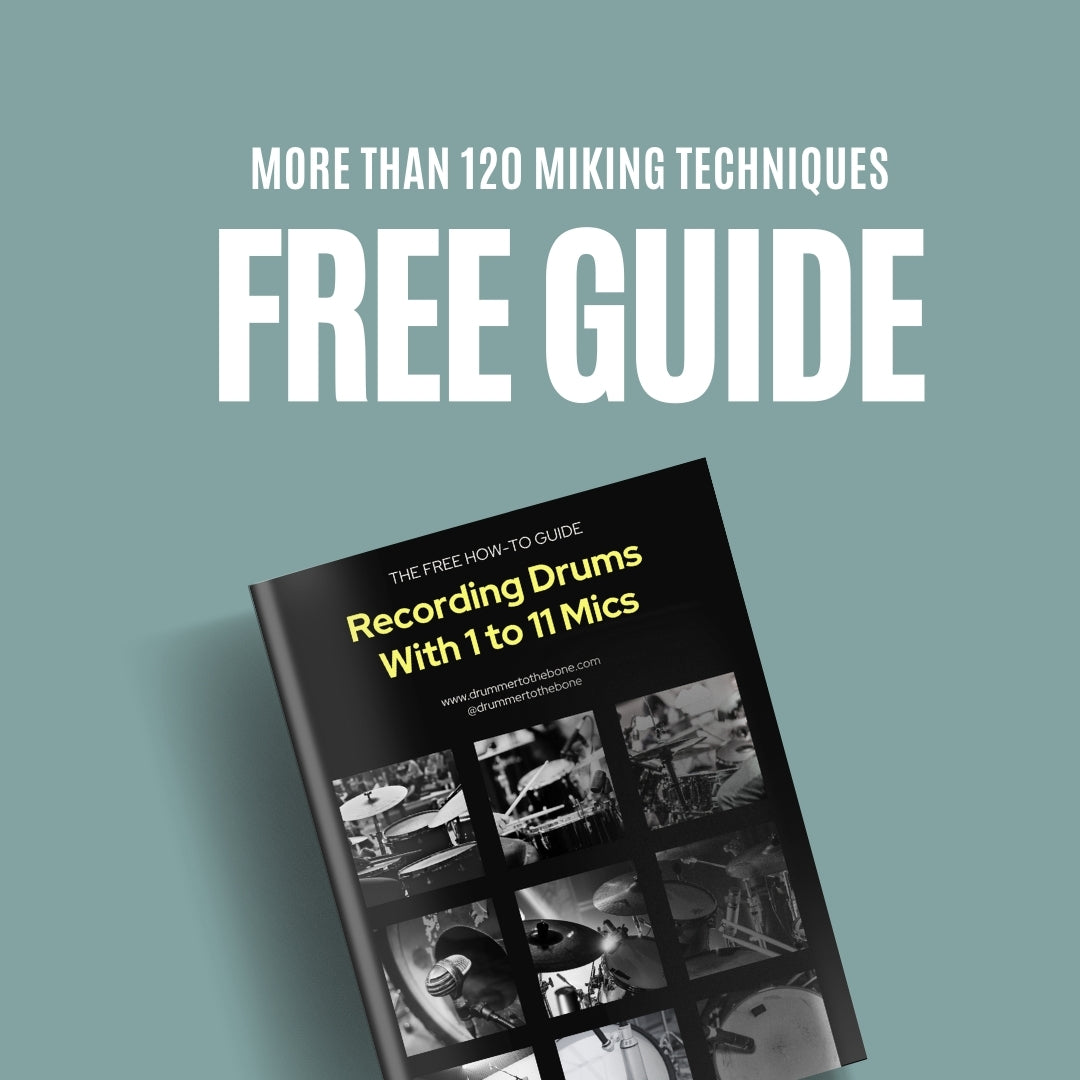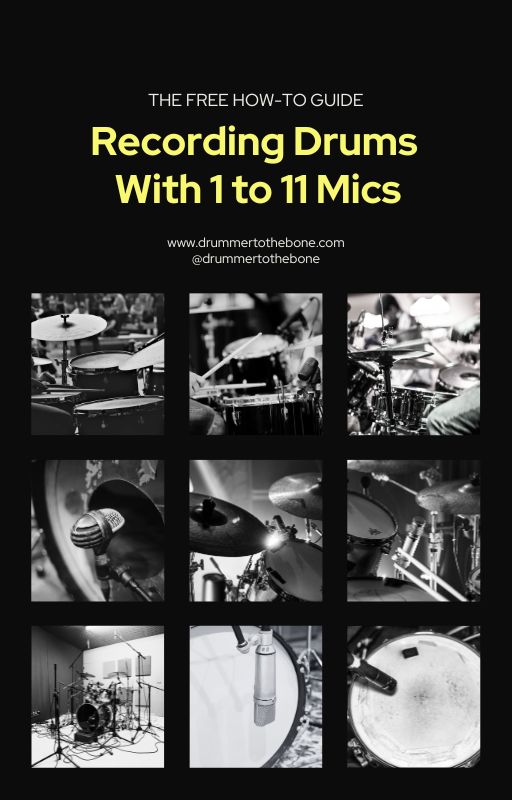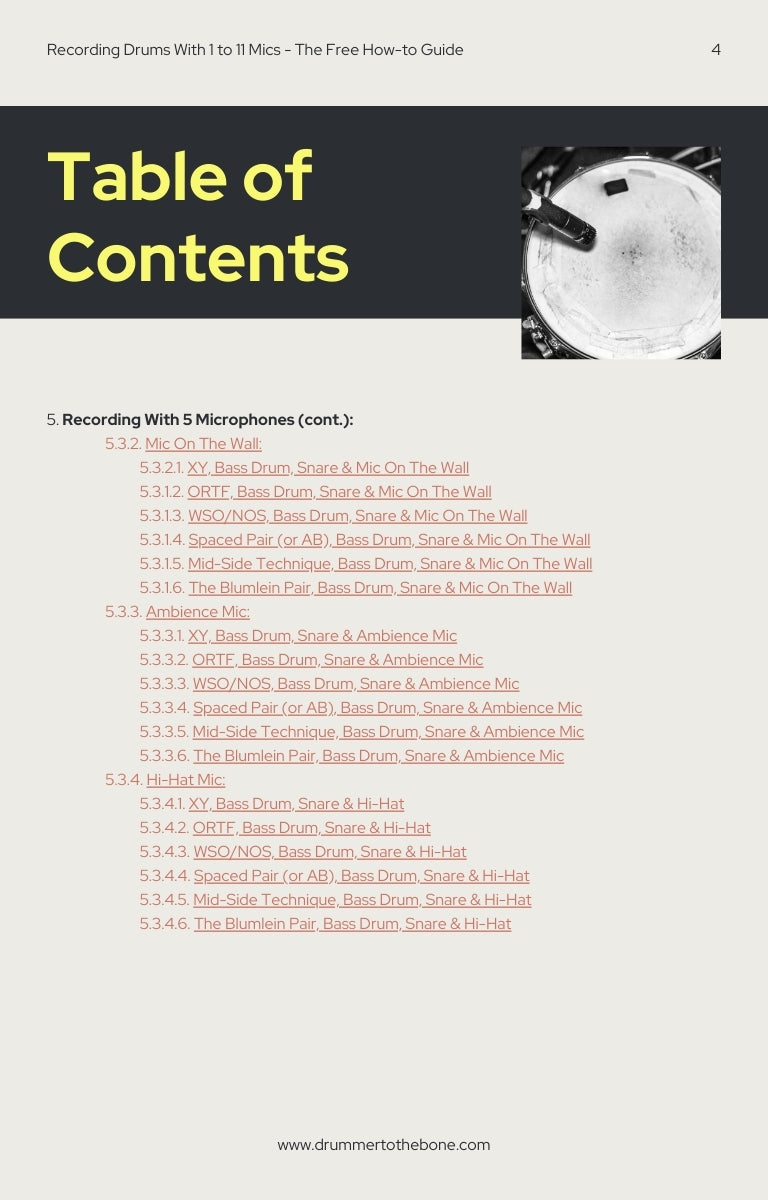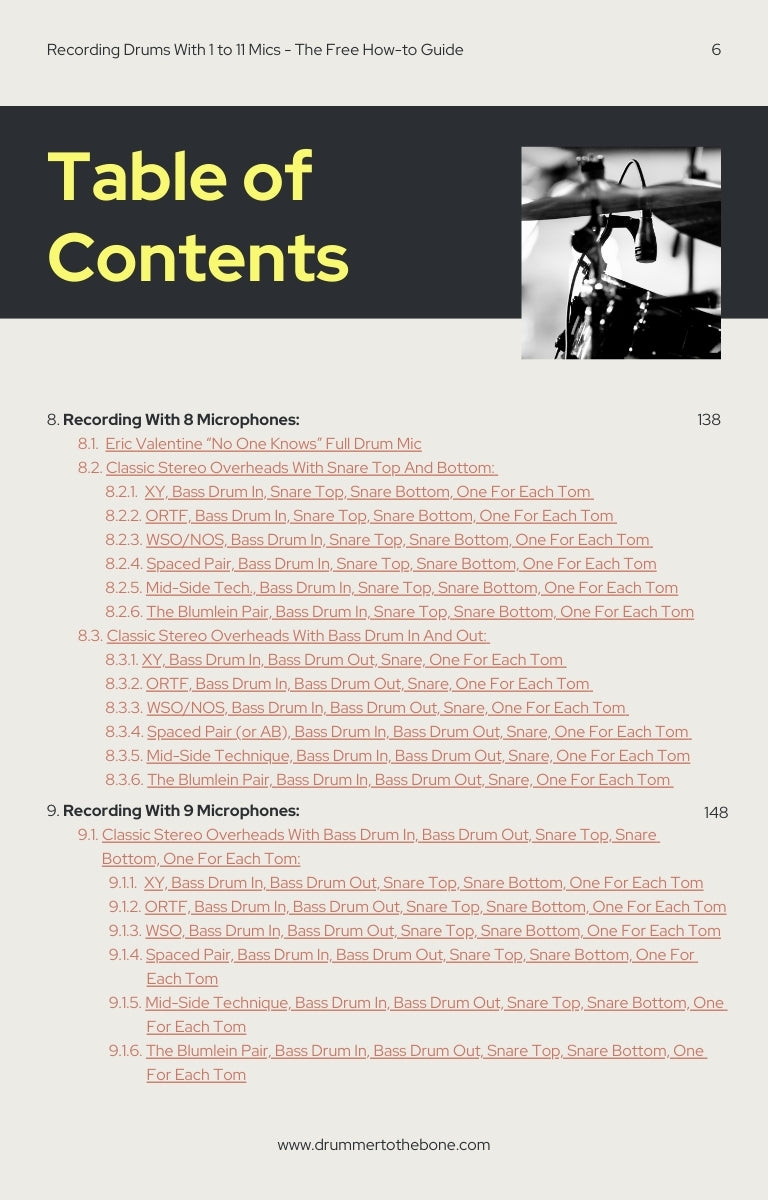This technique is an extension of the “Two Up-Front Technique” explained in another post. The idea behind this approach is to have the 2 condensers in front of the kit—as previously described—and adding a 3rd condenser as an overhead. So, it would look something like:
- Condenser front left.
- Condenser front right.
- Overhead condenser in the middle.

As with the Two Up-Front approach, the idea of having 2 condensers in front of the kit lies in the ability to capture the bass drum by both of them, while capturing a nice stereo-image of the drumset. Now, by adding a centered overhead, you also gain an overall mono signal, which certainly helps in many ways:
- You now have a centered signal, which can help you “anchor” the sound, in addition to the left and right signals from the other 2 condensers.
- The cymbals and toms will be clearer. Please have in mind the overhead discussion detailed in Recording With 1 Microphone: One Microphone Overhead technique.
- Added “snap” to the snare.
- All of the above will certainly help to create a more rounded sound of the drums.
Pros of this technique:
- More well-rounded sound, with a stereo image and a centered mono overhead signal which complement each other.
- Clearer sound from cymbals and toms.
- The bass drum is still the anchor of this sound, remaining pretty much in the center of all mics, which allows you to go harder in the stereo if you wish to do so.
Cons:
- A more “roomy” sound, which depending on what you’re looking for, can be a pro or a con.
- No closeups, no boosts, just an overall sound of the drums.
- More difficult to compensate for the lack of balance in your playing. If you go too hard on the cymbals, then it will be very difficult to fix it.
- As with the “Two up-front”, the bass drum might be on the dryer side of the sound spectrum. Since no microphone is placed in the middle of the drum’s sound projection (either inside or right outside the bass drum), the result is usually a dryer sound. You’ll probably need to EQ it a bit in your DAW.



